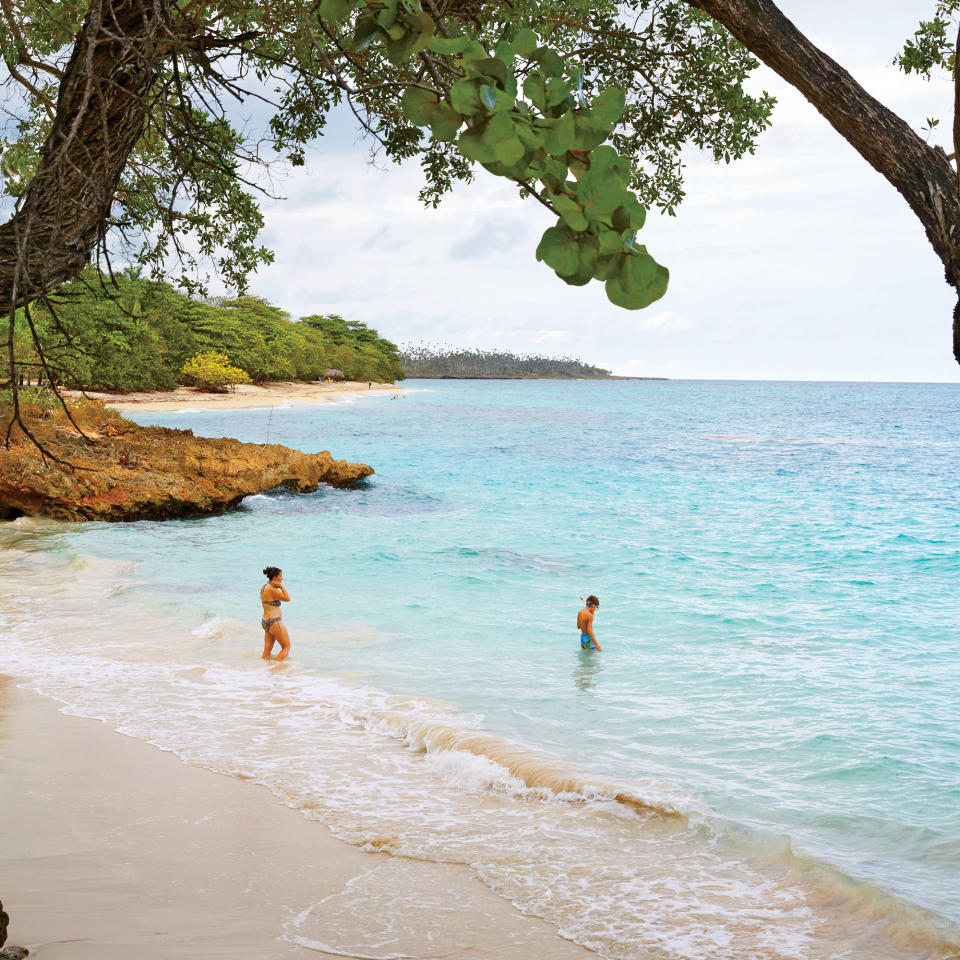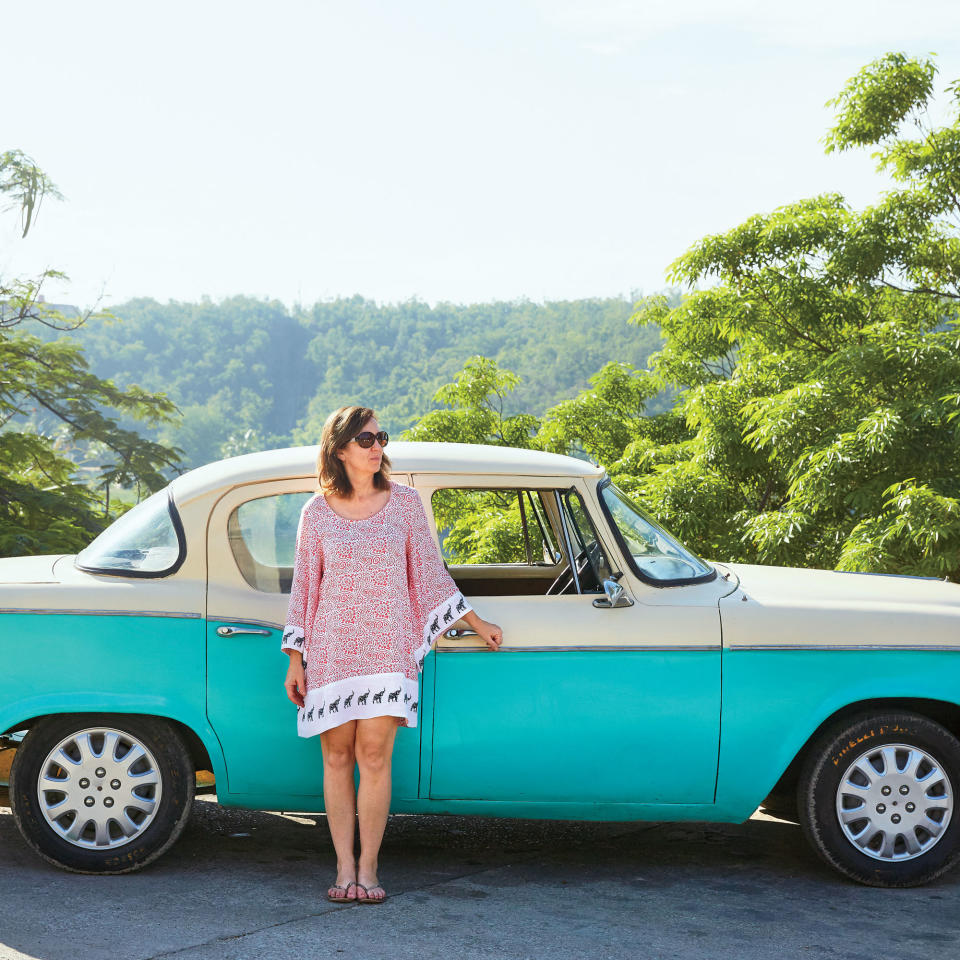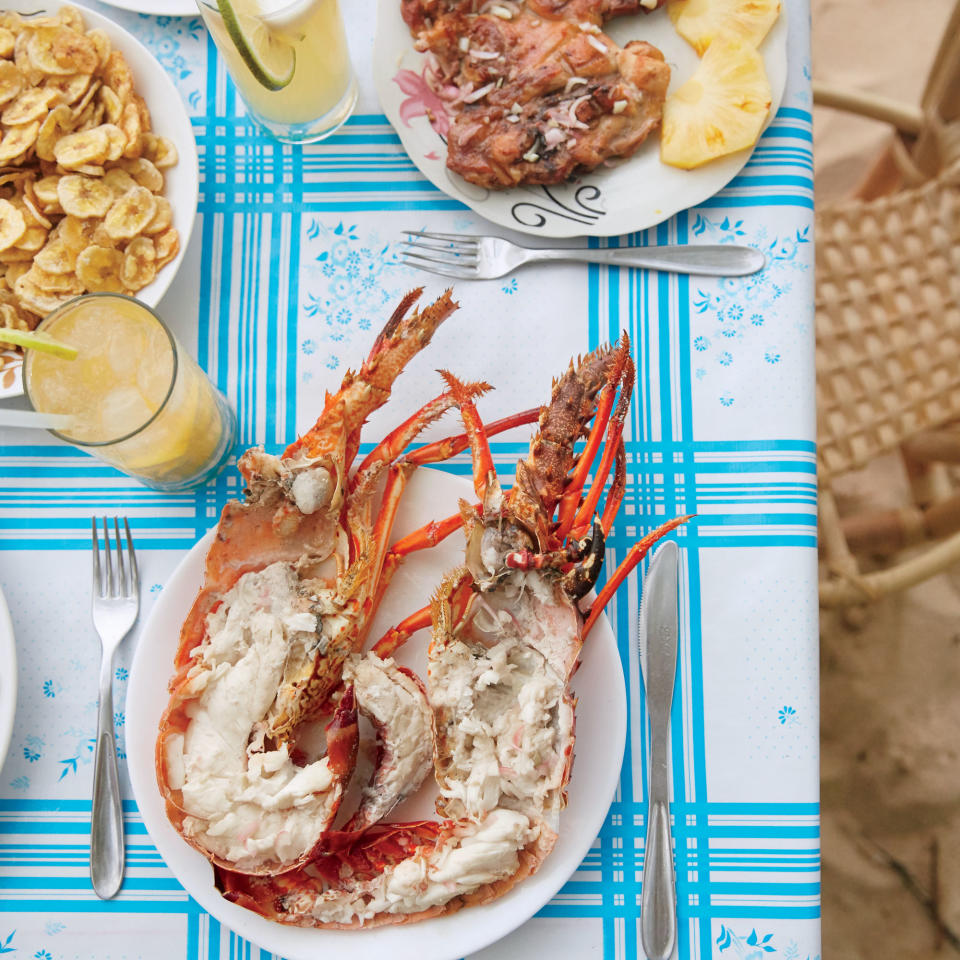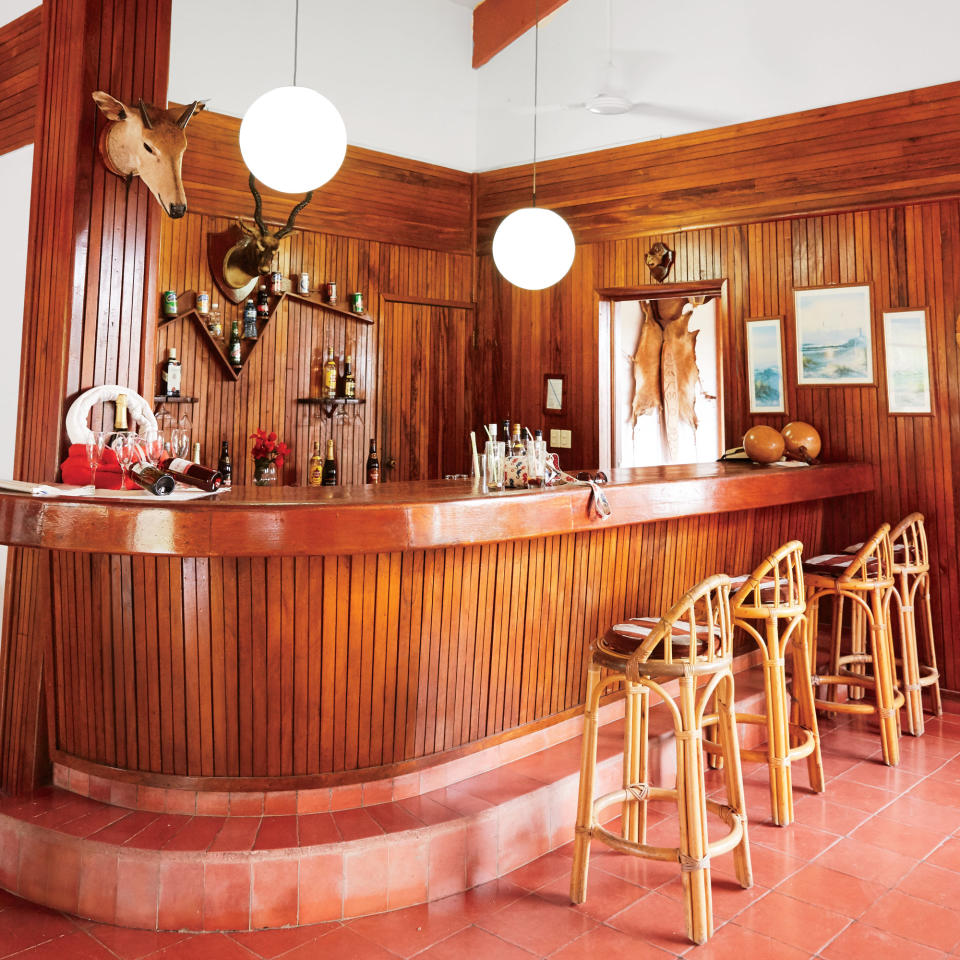Cuba's Wild Side
Cuba's Brad Pitt asks me to dance.
This is how it looks to me, anyway, sitting along the long wall of the Casa de la Trova Baracoa. This shoebox of a salsa dance hall has filled slowly but steadily over the past hour, as the band's guitar, percussion, and three-part harmonies have filled the room and drifted out a line of windows thrown open to the narrow main street. I've already downed two light-on-rum mojitos before they can turn tepid in the hot, humid air, and I've marveled at this young Cuban man dressed entirely in white, save for a version of his nation's flag adorning the back of his perfectly pressed dress shirt with blares of red and blue.
I've watched him commandingly pitch and spin an equally beautiful young woman, her dark halo of curls and black dress making arabesques against his white, shifting lines. But now, with a new song swelling, the young man stands still, hovering above me, his eyes the blue of the sea, his hand extended. He looks exactly like Brad Pitt, I think, if Brad Pitt were 25 forever and had close-cropped black hair and skin the color of a very light cup of coffee.
Egged on by Cubans sitting next to me, I reluctantly take his hand. I don't-I can't-salsa, I holler to him in English over the music. No matter. He pulls me into the fray, reaches around to place his hand gingerly at the small of my back, and pushes me gently into motion. It's time to learn.
Cuba teaches. Yes, it beguiles and yes, it challenges, but fundamentally, Cuba shows. Spending a week on the road here feels like a marathon blind date. Every glimpse, every encounter, feels like the first I'm having with an entire country. It's all one big salsa lesson.
This sense is intensified by the fact that I'm beginning my Cuban education away from where most Americans have gone; in other words, I'm bypassing Havana and a cluster of well-trodden white-sand beach resorts. I seek a purer Cuba, one that's emerging from a slow and quiet slumber along the edges.
Which leads me to the island's eastern end (traditionally called Oriente), to a mountainous tumble of steep slopes, intimate tawny beaches, colorful fishing villages, and a crown jewel of a city as old and storied as its more famous neighbor on the north shore. It's a Cuba, and Cubans themselves tell me this, that is still stuck in time, where Wi-Fi and cell signals are whispered promises, where guajiros still ride their horses into town and tie up to do business, where kids run with abandon just to look at the sea.
My journey begins in the east's largest and most glamorous city, the historic Caribbean port of Santiago de Cuba. As one of the island's oldest settlements, the city is dense with centuries of architectural layers, a palimpsest of colonial, Art Deco, mid-century modern, and even a little bit of Soviet bloc style. Everywhere, in hand-painted exhortation, the words of Cuba's revolution speak from the walls of the city-declarations of Castro and Che, and the three ultimate words: Viva la revolución! It's history and art made one. It's mesmerizing.
As are those cars. Like Havana, Santiago is filled with glorious vehicles of American days gone by, 1950s automobiles that have been tenderly maintained by Cuban owners-kept clean, kept beautiful, and kept running. Like opulent dinosaurs, the cars prowl Santiago's narrow streets. They park in front of crumbling facades and make for addictive photo ops. They contribute to the illusory sense that it might still be 1958, what with live music blaring from the trovas, old men in the parks giving rides to toddlers in goat-drawn carts, and families filling a town square on a Friday night to watch their teens compete in a traditional dance competition.
I spend two days wandering Santiago. I catch games played in the streets with operatic-level drama, from a boisterous bunch of boys kicking a deflated soccer ball to a contentious group of old men smacking down dominos. I find shops filled with ephemera, including LPs of salsa bands and old editions of Hemingway. I learn that all these people walking around with entire cakes balanced on their open palms are just dealing with Cuban life: You bring sweets home for the evening, but there's no cardboard for boxes. So you walk-even bike-home, with your cake en plein air.
I also learn why this is an apt bit of Cuban humor:
Q: What are the three greatest successes of the revolution?
A: Social security, 100 percent literacy, and healthcare.
Q: What are the three greatest failures?
A: Breakfast, lunch, and dinner.
It's not far off the mark, at least out here in Oriente. Decades of state-run restaurants have crippled Cuba's sense of culinary possibility. What began as illegal restaurants run out of homes-paladares-has evolved into small and often delightfully kitschy legal restaurants run on the top floors of homes. I enjoy climbing steep stairs and catching twinkling views across the rooftops of Santiago, but find the menus stuck in old sauces, the preparations hampered by overcooking. I stick to plates of whole fish, pulled from the Caribbean, and drink Crystal, the local beer. It's a good way to move through Cuba.
And move, then, I do, from the city to the countryside, toward the shore. I meet a Spanish expat who has cannily built up a little fleet of boats for excursions out of Santiago to nearby, isolated beaches. I'm stunned by the beauty of his home marina and the near-absence of boats there. It's no coincidence: In Cuba, a boat may still be considered a means of escape. It makes for a coastline that remains remarkably untouched, on shore and on the water.
Here and there, though, I find a smattering of thatch and timber: small hotels developed in the past decade by a state-sanctioned hotel group. They're luxurious by Cuban standards, which means impeccably clean, charmingly decorated with simple paintings and wonderful old-style wooden furnishings, and graced with towel sculptures on the beds and bars of fresh soap, unwrapped, balanced carefully upright at sink's edge.
I tuck into one of these hotels on the north shore: Villa Maguana, a group of timbered bungalows clustered above a pale crescent of sand. With a trio of affable Germans as my beachmates, I nurse a sweet Cuba libre and take lazy swims in the placid, aptly named Bahia Miel (Bay of Honey). I wander up the beach that evening to a colony of tiny restaurants along the water. In a display of classic Cuban entrepreneurial spirit and improvisation, one of the restaurant owners drags a table to the water's edge and adds some Adirondack chairs for a pop-up, rustic VIP lounge. Then he brings mojitos, freshly fried plantains, and grilled lobster still in the shell.
My Cuban guide lights a cigar he's brought with him for a special night on the journey. "I learned how to smoke from my dad," he tells me, clipping the end and eyeing its dark, tight wrapping of leaf. "You bring a cigar and smoke it when it's time to talk, and relax together. That's why you smoke a cigar." He takes a series of careful, slow puffs and blows the smoke toward the sea.
Time, like that cigar smoke, slows and expands. I spend a day exploring more beaches along the northeastern shore, including a stunner on Cayo Saetia, a beautiful little island appropriated by Fidel Castro (who was born in Oriente) for his own sybaritic escapes. Castro did more than sunbathe here, though-he stocked the place with imported East African animals for big-game hunting. While the famous family still visits, those antelopes, zebras, ostriches, and camels are now protected and roam the island, along with wild pigs and horses. A recent hotel channels the British colonial vibe, all the way down to "safari" rides in an old Russian jeep.
Another day, I hop into a fiberglass skiff and am paddled by a silent, standing boatman among the mangroves of the Parque Nacional Alejandro de Humboldt. We glide among tangles of branches, and he makes a clicking sound and points out jutias-cute little tree-dwelling critters checking us out from along the rocky shoreline. They're the only other beings I see. It's like staying at Disneyland after the park has closed. I have everything-Cuba, it almost seems-to myself.
And maybe like the off-season tourist who craves the city, I'm thrilled to arrive in bustling Baracoa, a fishing village that has made itself into a bit of an art colony. I stroll in giddy visual delight past the village's strings of little concrete homes painted bright colors, their porches molded to imitate Victorian style with ornate railings and balusters. I meet gallery owners, restaurateurs, and even the local drag performer, who regales me with tales of being photographed by Italian fashion magazines. Out in the middle of Cuba's nowhere, the nascent sophistication of this little town is both startling and intoxicating. I buy art, eat the best city food of the trip, and hang out in the town square. And of course, as the sun drops and the music rises, I head to the local trova to watch the dancers.
And it's here, in Baracoa, that my Brad Pitt takes me onto the floor for my education. Using his feet to teach, he gets my steps to mirror his, and over the course of the long song, I find a small, tenuous footing in the salsa. He spins me out a little, reels me back, and returns to our stepping together. But then the tempo accelerates, and he lifts me off my feet.
Held tightly by my partner, I spin. I look over his shoulder as we go around and around, faster and faster. The trova, the players, the other dancers, my hooting Cuban guide blur in a rich swirl around us. I watch this new world fly around me, and know that soon, I'll need to find my Cuban ground and take my next step. This is a dance, I realize, that I have no intention of ending.
Plan Your Own Cuban Adventure
While American travel continues to open and expand in Cuba, exploring the country (particularly off the beaten path) is greatly enhanced by consulting a professional. Johnny Consodine at Esencia Cuba Experiences (esenciaexperiences.com) planned and oversaw this itinerary, from arranging airport transfers in Miami to hiring guides and drivers, and making hotel reservations and excursion suggestions. Esencia can customize an itinerary anywhere in Cuba (including replicating this one), or you can join a standing tour.





